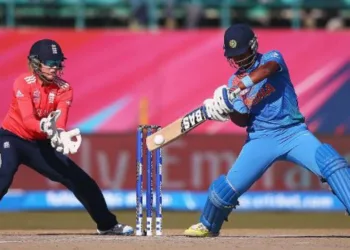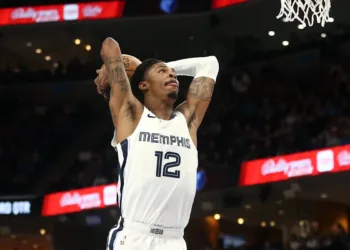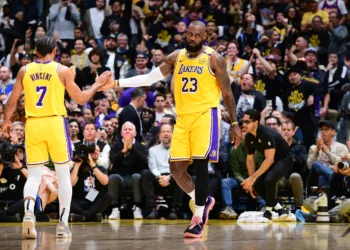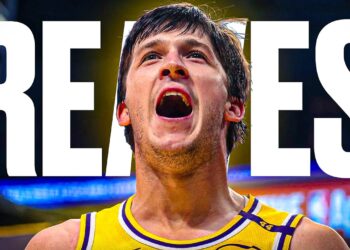Cooper Flagg entered Wednesday’s matchup against the New Orleans Pelicans under intense scrutiny. After consecutive disappointing performances, the No. 1 overall pick desperately needed a bounce-back game to restore confidence in his rookie campaign. What unfolded at American Airlines Center was a tale of two halves—one spectacular, one forgettable—that perfectly encapsulates the 18-year-old’s early NBA growing pains.
Table of Contents
Cooper Flagg Game Stats: November 5, 2025
| Category | First Half | Second Half | Final Stats |
|---|---|---|---|
| Points | 12 | 0 | 12 |
| FG Made-Attempted | 5-6 | 0-4 | 5-10 |
| 3-Point Shooting | 1-3 | 0-1 | 1-4 |
| Free Throws | 1-1 | 0-0 | 1-1 |
| Rebounds | 3 | TBD | 6+ |
| Assists | 2 | TBD | 3+ |
| Minutes | 18 | TBD | 30+ |
Stats based on available halftime and final reports
First Half Excellence: Flagg Finds His Rhythm
After missing his first three field goal attempts—a frustrating continuation of recent shooting woes—Flagg exploded to life with authority. His opening bucket came via a thunderous poster dunk over Karlo Matkovic that sent social media ablaze and energized the American Airlines Center crowd.
The former Duke phenom caught an alley-oop from Naji Marshall in transition, finishing with contact for an and-one that completed a three-point play. This viral moment became the spark Dallas desperately needed while trailing the lowly Pelicans early.
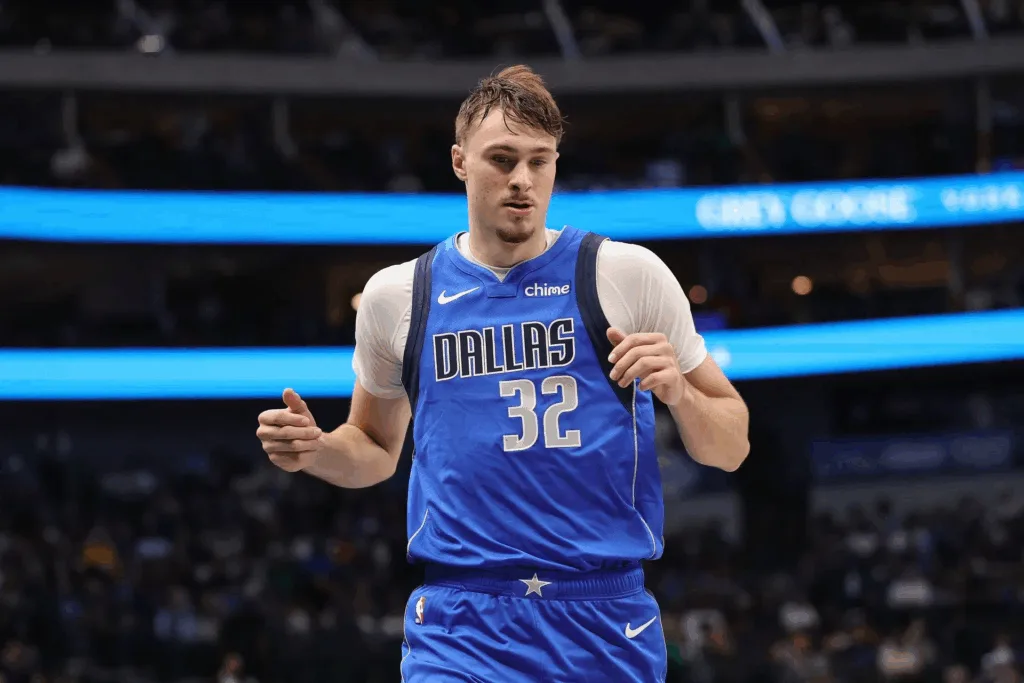
Flagg’s second quarter proved transformative. He scored 12 points on 5-of-6 shooting in the first half, showcasing the efficiency that made him the top pick. The highlight-reel performance included his first three-pointer of the night and demonstrated why NBA scouts believed in his two-way potential.
What Worked: Flagg attacked the rim aggressively, played within the offense, and showcased his defensive instincts with active hands and timely rebounds. His 83.3% shooting percentage in the opening half resembled the dominant player Duke fans remember. Visit our NBA rookie analysis hub for more first-year player breakdowns.
Second Half Struggles: The Rookie Wall Hits Hard
Unfortunately for Flagg and Dallas Mavericks fans, the third and fourth quarters told a drastically different story. The 18-year-old was held scoreless on 0-of-4 shooting in the second half, failing to capitalize on his early momentum.
This dramatic drop-off highlights the consistency issues plaguing Flagg’s early career. The Duke product is averaging 13.6 points while shooting 38.8% from the field and 30.8% from 3-point range through seven games—numbers that fall significantly short of No. 1 pick expectations.
Contributing Factors:
- Physical fatigue from extended minutes
- Adjustment to NBA defensive intensity in half-court sets
- Lack of complementary scoring options with multiple Mavericks stars injured
- Possible shoulder soreness mentioned by Coach Jason Kidd
The Bigger Picture: Rookie Redemption or Ongoing Concerns?
Flagg’s performance presents a complex evaluation. His viral poster dunk and efficient first half demonstrate his ceiling—elite athleticism, finishing ability, and confidence. However, the second-half disappearing act reinforces concerns about consistency and half-court scoring.
“It’s a tough league,” Flagg acknowledged postgame. “It’s a transition. Obviously, I haven’t made a lot of shots or been as efficient as I want to, but I’m going to keep trusting the work.”
This mature perspective suggests mental resilience despite statistical struggles. For context, legendary rookies like LeBron James and Kevin Durant experienced similar adjustment periods before dominating. Check our historical rookie comparison database for perspective.

Context: Dallas’s Depleted Roster
Flagg’s challenges are amplified by Dallas’s injury crisis. Playing without stars like Kyrie Irving (knee surgery) and Anthony Davis (calf strain), the rookie lacks veteran playmaking support that typically eases first-year transitions. This forces Flagg into creation responsibilities beyond his current skill set.
The shorthanded Mavericks roster places unrealistic pressure on an 18-year-old still adjusting to NBA speed, physicality, and defensive schemes. More experienced teammates would create easier scoring opportunities through better floor spacing and ball movement.
What’s Next for Cooper Flagg?
The former Duke standout must find consistency between his explosive highs and frustrating lows. His physical tools and basketball IQ are undeniable—the challenge lies in maintaining aggression throughout entire games while developing a reliable half-court scoring repertoire.
Keys to Improvement:
- Develop a consistent mid-range game to complement rim attacks
- Improve three-point shooting mechanics (currently 30.8%)
- Build stamina for sustained performance across 35+ minute games
- Learn to score efficiently against set defenses
For complete Dallas Mavericks coverage and Cooper Flagg updates, follow our NBA news section for daily analysis.
FAQs
Is Cooper Flagg struggling because of the Mavericks’ roster construction?
Partially, yes. Playing without established stars like Kyrie Irving and Anthony Davis forces Flagg into creation roles beyond his developmental stage. Most successful No. 1 picks benefit from veteran support systems that create easier scoring opportunities. However, Flagg’s 38.8% field goal percentage reflects genuine shooting struggles independent of roster issues. His first-half efficiency against the Pelicans (83.3%) proves he can score when aggressive and decisive—the challenge is maintaining that approach for 35+ minutes.
How does Cooper Flagg’s rookie season compare to other recent No. 1 picks?
Flagg’s 13.6 PPG on 38.8% shooting falls below recent top picks like Victor Wembanyama (21.4 PPG, 46.5% FG as a rookie) and Paolo Banchero (20.0 PPG, 42.7% FG). However, direct comparisons ignore context—Flagg plays for a depleted, struggling team while those players joined more stable situations. His defensive metrics and rebounding (6.3 RPG) remain solid. History suggests patience: Kevin Durant shot just 42.8% as a rookie before becoming one of the greatest scorers ever.


